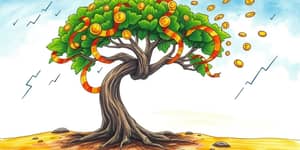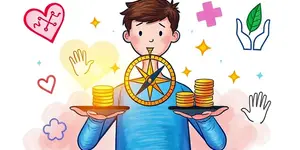Debt can cast a long shadow over daily life, creating worry and limiting opportunities. In 2025, Americans are more determined than ever to bring order to their finances and eliminate the stress that comes with owing money. With precise planning and discipline, you can transform a tangled web of obligations into a clear path toward financial freedom.
By embracing a step-by-step framework, you’ll gain structured and organized repayment strategy that unlocks confidence and control. This guide will equip you with the tools, insights, and motivation to tackle debt head-on and emerge stronger.
The landscape of consumer debt in 2025
Reducing personal debt has become Americans’ No. 1 financial goal for 2025, with 42–44% of respondents listing it as their top priority. Rising interest rates and ongoing inflation have made borrowing more expensive, putting additional pressure on household budgets.
Nearly 97% of people begin each year with a financial target, yet almost 90% anticipate obstacles such as too many expenses (38%) and elevated debt levels (30%). Over half (52%) worry about the long-term effects of debt on their financial health, and 48% fear it may derail important life plans.
Building a clear picture: listing and understanding debt
Before you can conquer debt, you must know exactly what you owe. Start by listing every obligation—credit cards, student loans, auto loans, mortgages—and record the balance, interest rate, monthly payment, and due date for each.
This comprehensive inventory offers the clarity needed to design an effective repayment plan. By seeing the full scope of your obligations, you avoid missed payments and gain the insight necessary to prioritize strategically.
Crafting a budget that works for you
A realistic budget is the backbone of debt reduction. One popular framework is the “50-30-20 rule”: allocate 50% of after-tax income to necessities, 30% to discretionary spending, and 20% to savings and debt repayment.
- 50% on essential living costs: housing, utilities, groceries
- 30% on lifestyle choices: dining out, entertainment, hobbies
- 20% toward savings and debt: emergency funds and extra loan payments
Trim variable, non-essential expenses to free up more funds for debt. Even small adjustments—like brewing coffee at home or carpooling—can accelerate your progress.
Choosing the right repayment strategy
Selecting a method that aligns with your psychology and goals is critical. Two of the most effective approaches are the debt snowball and debt avalanche.
No matter the approach, always cover minimum payments on all accounts to avoid fees and penalties. As each balance falls to zero, apply the freed-up payment amount to the next target, gaining momentum and confidence.
Leveraging professional help and negotiation
If you encounter hardship, negotiating directly with creditors can yield lower interest rates or revised payment plans. Always secure new terms in writing before proceeding.
Be cautious of predatory debt-relief firms. Reputable settlement agencies typically charge 15–20% of the total enrolled debt, so weigh the impact on your credit score and overall cost before enrolling.
Harnessing technology and fintech tools
In 2025, digitization has revolutionized personal finance. A variety of apps and online platforms can streamline your debt management process and keep you on track.
- Automated payment reminders to avoid late fees
- Real-time trackers that visualize balance reductions
- Custom alerts for budget variances and spending caps
By integrating these tools, you’ll maintain focus and reduce administrative burdens, freeing mental space for bigger-picture planning.
Maintaining momentum and revisiting your plan
Your financial journey evolves as your life circumstances change—a new job, unexpected medical bills, or a shift in household size. Regularly revisit your budget and debt strategy to ensure alignment with current goals.
Track progress monthly: update balances, monitor interest savings, and adjust payment allocations. This iterative process ensures your plan remains both realistic and ambitious.
The emotional and psychological rewards of debt freedom
Debt reduction delivers profound non-financial benefits. According to recent surveys, 84% of people agree that lowering debt significantly alleviates stress and anxiety. Regaining control of your finances fosters a sense of empowerment, translating into improved relationships and enhanced well-being.
Achieving each milestone—paying off a credit card, eliminating an auto loan—provides motivation to tackle the next challenge. Embrace each win, no matter how small, as proof of your growing financial strength.
With a clear roadmap and the right mindset, you can transform debt from a burden into a catalyst for growth. Begin by listing your obligations, crafting a budget, selecting a repayment method, and leveraging available tools and resources. Celebrate progress, adapt as needed, and remain committed to achieving long-term financial peace of mind.
The journey to debt freedom may require persistence and sacrifice, but the payoff—greater confidence, reduced stress, and the freedom to pursue your dreams—is immeasurable. Start today with one simple step, and watch as structure and clarity pave the way to a brighter financial future.
References
- https://www.cfp.net/news/2024/12/reducing-debt-is-americans-no-1-financial-priority-for-2025-cfp-board-research-finds
- https://unctad.org/publication/world-of-debt
- https://extension.wvu.edu/youth-family/finances/blog/2025/04/01/smart-strategies-for-effective-debt-management
- https://www.oecd.org/en/publications/2025/03/global-debt-report-2025_bab6b51e.html
- https://www.amerantbank.com/ofinterest/debt-management-strategies-for-financial-freedom-2025/
- https://dfpi.ca.gov/news/insights/three-steps-to-managing-and-getting-out-of-debt/
- https://www.finsmes.com/2025/01/the-new-rules-of-debt-management-everyone-should-know-in-2025.html










